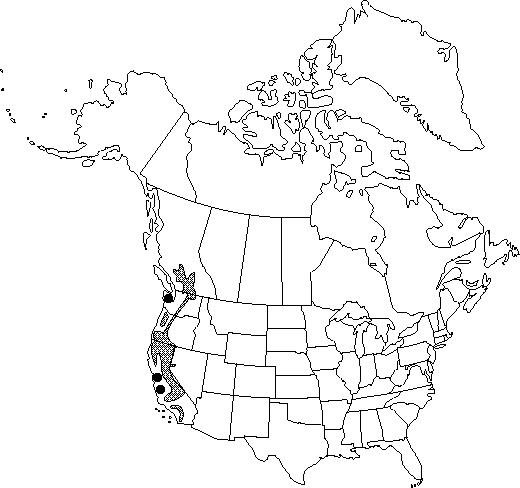Pinus ponderosa var. ponderosa
Trees to 72m; trunk to 2.5m diam. Twigs commonly red-brown, not glaucous. Buds very resinous. Leaves mainly 3 per fascicle, 12–25(–30)cm × (1.2–)1.5–2mm. Pollen cones mostly red. Seed cones 8–15cm, symmetric; apophyses of fertile scales moderately raised; umbo low-pyramidal, tapering acuminately to short broad-based prickle. Seed body 6–9mm; wing 15–25mm.
Habitat: Montane, dry, open forests
Elevation: 0–2300m
Distribution

B.C., Calif., Nev., Oreg., Wash.
Discussion
Pinus ponderosa var. ponderosa is sympatric with and hybridizes with P. jeffreyi, but in areas of sympatry it usually occurs at lower elevations than P. jeffreyi. Loggers often distinguish the two by the strong turpentine odor of fresh-cut wood of P. ponderosa, which contrasts with the sweeter odor of P. jeffreyi. Harvest of var. ponderosa far exceeds regrowth because of high timber value and multiple uses of the wood. Pinus ponderosa var. ponderosa is the largest and stateliest yellow pine in the flora.
Selected References
None.